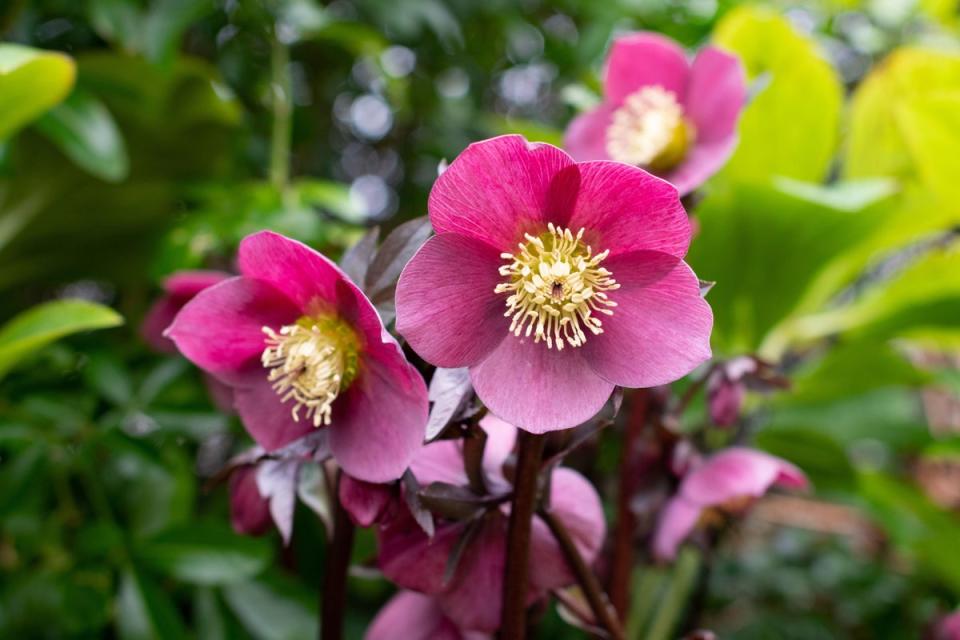Beat the winter blues: five colourful seasonal plants to buy or see in London parks now

In these short, bleak days the murmurs of a new season coming up through layers of fallen leaves and on bare branches feel miraculous.
Here are five plants to beat the winter blues.
Snowdrops — Galanthus
One of the earliest indicators that spring is on the way is the delicate snowdrop, or Galanthus. Reaching no more than 10cm tall, the white flowers, sometimes flecked with green or gold, can be easily missed.
They are most likely to be spotted in light shade and damp soil, typically around the edges of woodlands. If growing at home, position them at hedge edges and under trees.
You can find large displays of snowdrops at Kew Gardens and the Chelsea Physic Garden, or if you want to get out of London and into the countryside, you’ll find carpets of them at National Trust Stowe in Buckinghamshire, so much so they are lovingly referred to as ‘stowedrops’.
Hellebores
About this time of year you can expect to see hellebores start to flower. Similar to snowdrops, most hellebores grow best in dappled shade and damp ground, making them perfect plants for a shady London corner. There is a huge variety of colours both in the flowers and leaves.
Favourites include the slightly tender marble leafed Helleborus lividus, which has greenish flowers that fade to pink, and the hybrid ‘Havington single white speckled’ with white flowers flecked with pink. The leaves are normally evergreen, but you can bring them back this time of year to make the most of the flowers.

Catkins
Keep an eye out for the trees flowering now, including the furry catkins of goat willow that explode to reveal yellow flowers, and the masses of acid green tassels on hazel trees. If you get up close and personal with the hazel, you’ll see exquisite small purple flowers, which if pollinated will be where hazelnuts grow.
Providing they are well watered through summer, both hazel and goat willow can be grown in pots and coppiced (cut back close to the ground) if and when they get too big.
Wintersweet — Chimonanthus praecox
Native to the Sichuan mountains in China, this is a less commonly seen winter flowering shrub. Hundreds of little translucent yellow lanterns appear this time of year, with a sweet scent to attract pollinators.
As a large shrub, you are most likely to see this growing in London’s parks — there are some great winter flowering plants in the Isabella plantation in Richmond Park. However, if you have room in your garden they are worth making space for.
Witch Hazel — Hamamelis
For much of the year witch hazel exists as a shrub or small tree with leaves similar to that of a true hazel (hence the name). Then, in the depth of winter, from small, unsuspecting furry buds burst masses of tiny fragrant ribbons. Depending on the cultivar these could be lemon yellow like H mollis, or a burnt orange like H intermedia ‘Jelena’.
Frustratingly, these trees sometimes have a habit of clinging on to last year’s leaves, especially if it has been a dry summer, hiding the blooms. The old leaves can be carefully plucked off before flowering and the show is worth it.

 Yahoo Movies
Yahoo Movies 